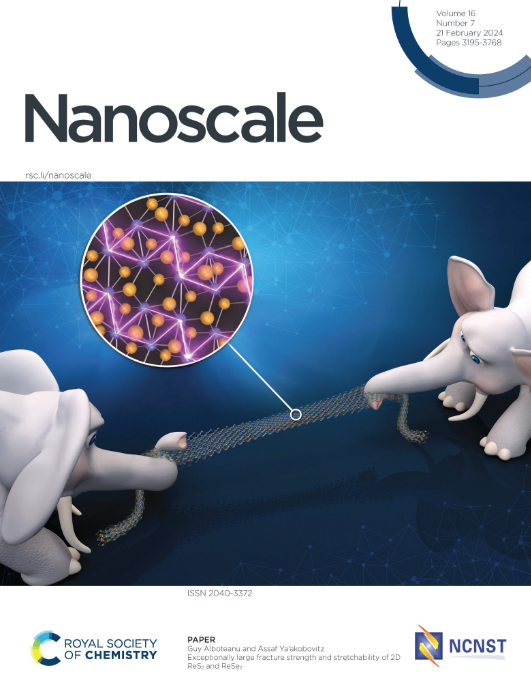A Novel Paper Sensor with Modified Aptamer for Accurate Detection of Clinical Cardiac Troponin I
IF 5.8
3区 材料科学
Q1 CHEMISTRY, MULTIDISCIPLINARY
引用次数: 0
Abstract
Accurate and rapid detection of Cardiac Troponin I (CTnI) is essential for the early diagnosis and timely management of myocardial infarction (MI). However, conventional detection methods relying on antigen-antibody interactions often face challenges such as high costs and lengthy procedures. Novel detection methods based on antigen-aptamer interactions offer a potentially superior alternative. Nevertheless, the performance of antigen-aptamer sensors is typically compromised by the unstable structure of aptamers, resulting in limited sensitivity and inconsistent specificity in CTnI detection. To address these issues, we have developed an innovative aptamer structure to construct a paper-based sensor comprising a paper electrode and a CTnI aptamer detection module. The paper electrode employs PEDOT:PSS to uniformly distribute single-walled carbon nanotubes (SWCNTs) at high concentrations on filter paper. The detection module utilizes modified CTnI aptamers with a continuous (AT)5 sequence in the anchor domain to enhance stable immobilization on SWCNTs without chemical reactions. We discovered that incorporating appropriate 18-atom hexa-ethylene glycol spacers (Sp18) between the protein-capture and anchor domains of the aptamers can improve the sensitivity of the current response for CTnI detection. Through the optimization of annealing temperature and duration, the paper sensor Aps3-CTnI-PS@CP, which integrates (AT)5 and three Sp18 into the aptamer, demonstrated enhanced sensitivity and specificity for CTnI detection. When applied to clinical samples, Aps3-CTnI-PS@CP exhibited a favorable receiver operating characteristic (ROC) curve, with an area under the curve (AUC) of 0.982, a sensitivity of 0.917, and a specificity of 0.945 for CTnI detection. This performance correlates strongly with traditional chemiluminescence immunoassay (CLIA) assays used in clinical settings. The straightforward fabrication process and minimal batch-to-batch variability make Aps3-CTnI-PS@CP a promising candidate for clinical aptamer-based CTnI detection.求助全文
约1分钟内获得全文
求助全文
来源期刊

Nanoscale
CHEMISTRY, MULTIDISCIPLINARY-NANOSCIENCE & NANOTECHNOLOGY
CiteScore
12.10
自引率
3.00%
发文量
1628
审稿时长
1.6 months
期刊介绍:
Nanoscale is a high-impact international journal, publishing high-quality research across nanoscience and nanotechnology. Nanoscale publishes a full mix of research articles on experimental and theoretical work, including reviews, communications, and full papers.Highly interdisciplinary, this journal appeals to scientists, researchers and professionals interested in nanoscience and nanotechnology, quantum materials and quantum technology, including the areas of physics, chemistry, biology, medicine, materials, energy/environment, information technology, detection science, healthcare and drug discovery, and electronics.
 求助内容:
求助内容: 应助结果提醒方式:
应助结果提醒方式:


